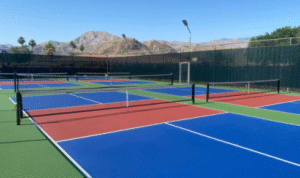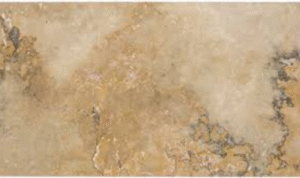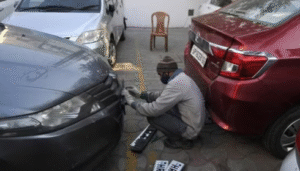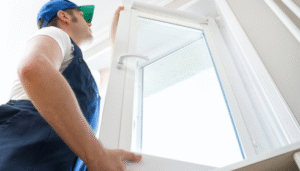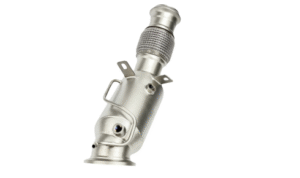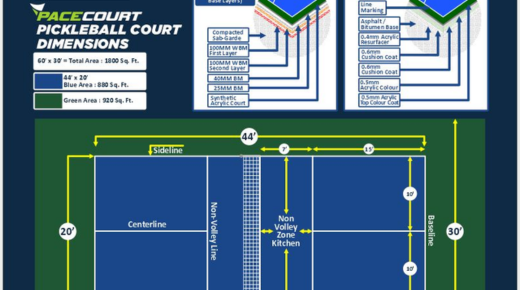
pickleball court flooring
Introduction
Pickleball has quickly become one of the fastest-growing sports in the world, appealing to a wide range of age groups and skill levels. This surge in popularity has led to a significant demand for specialized pickleball courts, prompting both new constructions and adaptations of existing facilities. The unique nature of pickleball, which combines elements of tennis, badminton, and table tennis, requires specific considerations in court design and construction. From the choice of pickleball court flooring to the selection of suitable materials, the process involves careful planning and expertise. Pickleball court builders and makers play a crucial role in delivering high-quality courts that meet the sport’s specific requirements, ensuring a safe and enjoyable playing experience.
Pickleball Court Flooring Options
The choice of flooring material is a critical factor in pickleball court construction, influencing the game’s speed, bounce, and overall player comfort. For outdoor pickleball courts, the most common surfaces include concrete, asphalt, and acrylic. Concrete courts are popular due to their durability and low maintenance requirements. They provide a hard, smooth surface that offers consistent ball bounce and speed. However, concrete can be unforgiving on players’ joints, which has led to the development of cushioned coatings. These coatings, often made of acrylic, provide a softer playing surface that reduces impact and improves player comfort. Acrylic surfaces are also preferred for their weather-resistant properties and ability to maintain color vibrancy over time.
Asphalt courts, while similar to concrete in many respects, offer a slightly softer playing surface, which can be beneficial for reducing joint stress. However, asphalt is more prone to cracking and requires regular maintenance to prevent surface deterioration. To enhance the playability of asphalt courts, a layer of acrylic coating is often applied. This not only improves the court’s durability but also allows for customization in terms of color and texture. Acrylic coatings can provide additional benefits such as UV protection and resistance to weather conditions, making them an ideal choice for outdoor courts.
Indoor pickleball courts, on the other hand, often use synthetic materials like polyurethane or rubber. These materials provide excellent shock absorption, reducing the risk of injuries and allowing for extended play without discomfort. Synthetic surfaces can be tailored to specific performance needs, such as increased grip or reduced glare, making them suitable for both recreational and competitive play. The modular design of some synthetic flooring systems also allows for easy installation and replacement, providing flexibility for multi-use facilities.
Construction Techniques and Considerations
The construction of a pickleball court involves several key steps, starting with site selection and preparation. The site must be level and free of debris, with adequate drainage systems in place to prevent water accumulation. For outdoor courts, proper drainage is especially important to avoid damage from standing water and to ensure the court remains playable in various weather conditions. The base layer, typically made of compacted gravel or crushed stone, provides a stable foundation for the surface material. This is followed by the application of the chosen flooring material, whether it be concrete, asphalt, or synthetic. For concrete and asphalt courts, the surface must be smoothed and leveled to ensure consistent play. An acrylic coating may then be applied to enhance durability and aesthetics.
The court dimensions and layout are also crucial considerations in pickleball court construction. Standard pickleball courts measure 20 feet wide by 44 feet long, with specific markings for the no-volley zone, service areas, and baselines. These markings are typically painted using high-quality, weather-resistant paint that can withstand the wear and tear of regular play. In addition to the playing surface, the installation of appropriate fencing and lighting is important to provide a safe and enjoyable playing environment. Fencing helps contain balls and defines the playing area, while lighting ensures that the court can be used during evening hours and in low-light conditions.
Pickleball Court Makers and Customization
Pickleball court makers and builders offer a range of services and products tailored to the specific needs of this rapidly growing sport. Customization is a key aspect of modern pickleball court construction, allowing for personalized court designs that reflect individual preferences or branding. This can include unique color schemes, logos, and other design elements that enhance the visual appeal of the court. In addition to aesthetic considerations, customization can also address functional aspects such as surface texture, which can be adjusted to provide different levels of traction and ball response. This is particularly important for competitive play, where the consistency and quality of the playing surface can significantly impact performance.
Many manufacturers also offer turnkey solutions, handling everything from design and construction to maintenance and repair services. This comprehensive approach ensures that all aspects of the court are professionally managed, resulting in a high-quality, long-lasting facility. Regular maintenance, such as surface cleaning, crack repairs, and resurfacing, is essential to keep the court in optimal condition and extend its lifespan. Manufacturers often provide warranties and maintenance plans, offering peace of mind to facility owners and operators.
Innovations and Trends in Pickleball Court Construction
As pickleball continues to grow in popularity, the industry is seeing a range of innovations and trends that enhance the playing experience. One notable trend is the increasing use of eco-friendly materials and construction practices. This includes the use of recycled materials in base layers and synthetic surfaces, as well as water-based paints and coatings that reduce the environmental impact. Additionally, the integration of advanced technologies such as LED lighting systems not only improves visibility and energy efficiency but also adds a modern touch to court facilities.
Another emerging trend is the development of multi-use courts, which can accommodate different sports and activities. This versatility is particularly valuable for community centers, schools, and recreational facilities looking to maximize the use of their space. Multi-use courts often feature modular flooring systems that can be easily reconfigured or replaced, allowing for quick transitions between sports like basketball, tennis, and pickleball. This adaptability helps attract a wider range of users and makes the facility more appealing to diverse groups.
In conclusion, the rise of pickleball has driven significant advancements in court construction, with a focus on quality materials, innovative designs, and customization options. Whether for recreational or competitive play, the importance of well-constructed pickleball courts cannot be overstated. By working with experienced pickleball court makers and embracing the latest trends and technologies, facility owners can create courts that not only meet the needs of players but also enhance the overall appeal and functionality of their venues. As the sport continues to grow, the demand for high-quality, specialized courts will only increase, making it an exciting time for both players and builders in the world of pickleball.

